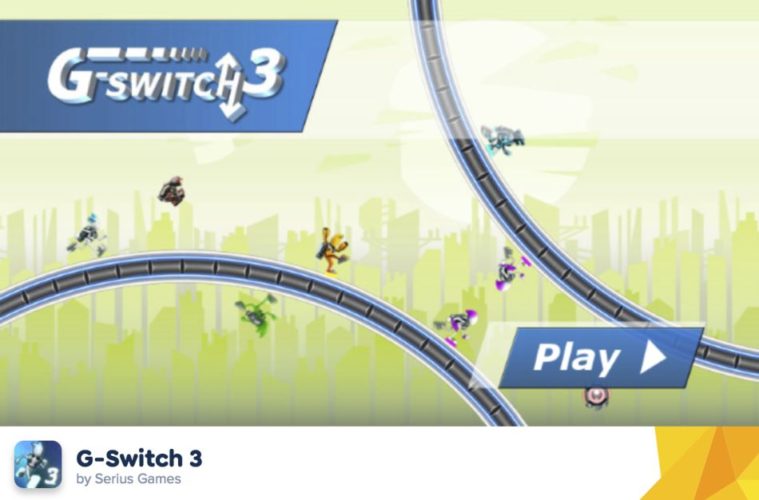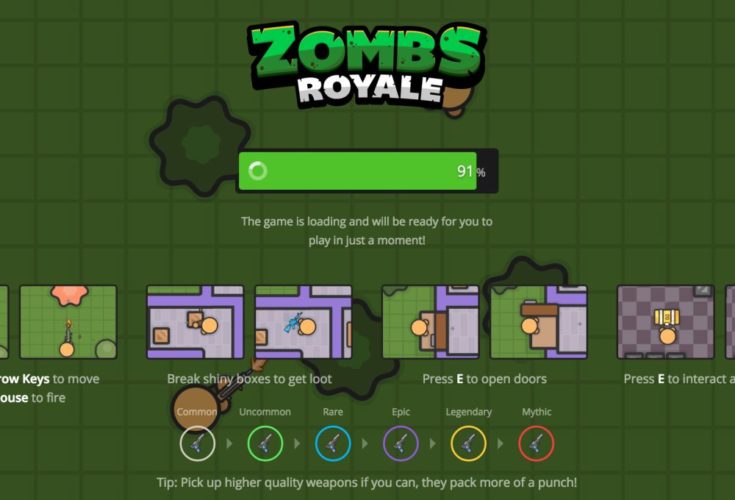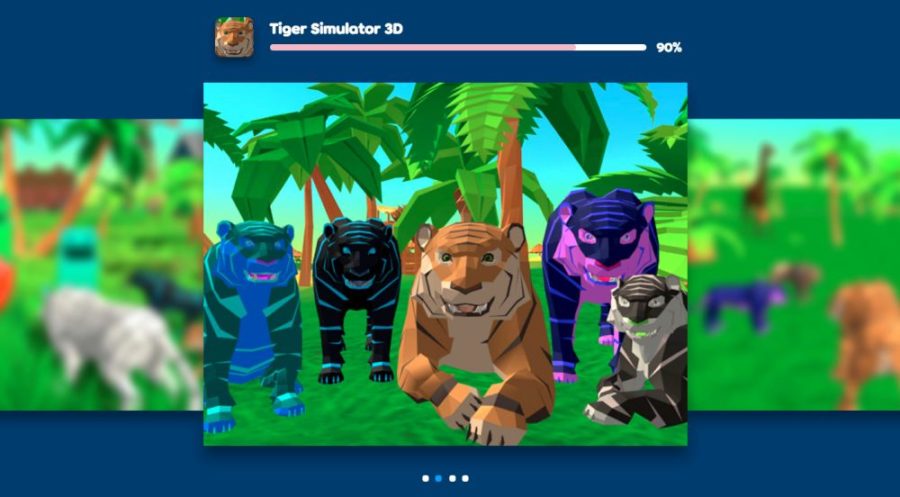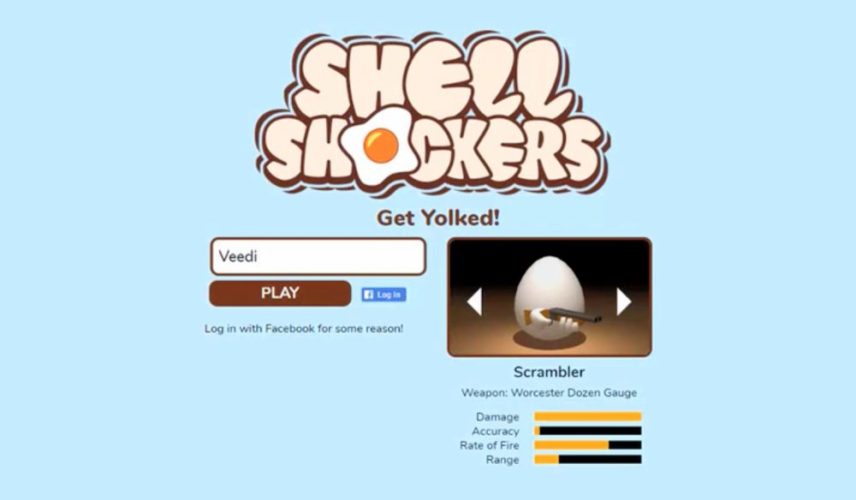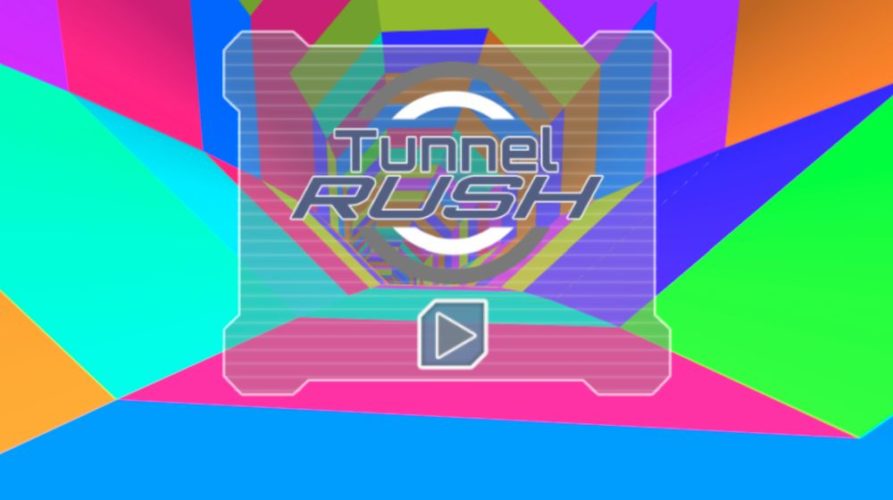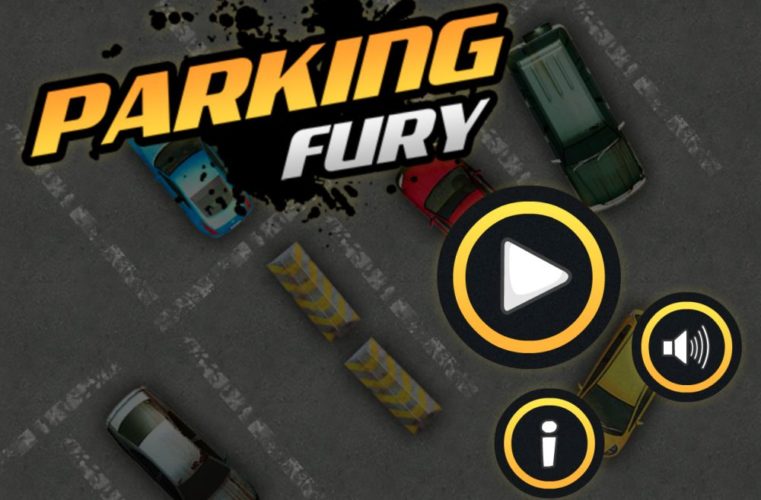Reviews & Previews
Run 3 Game: Photo Finish
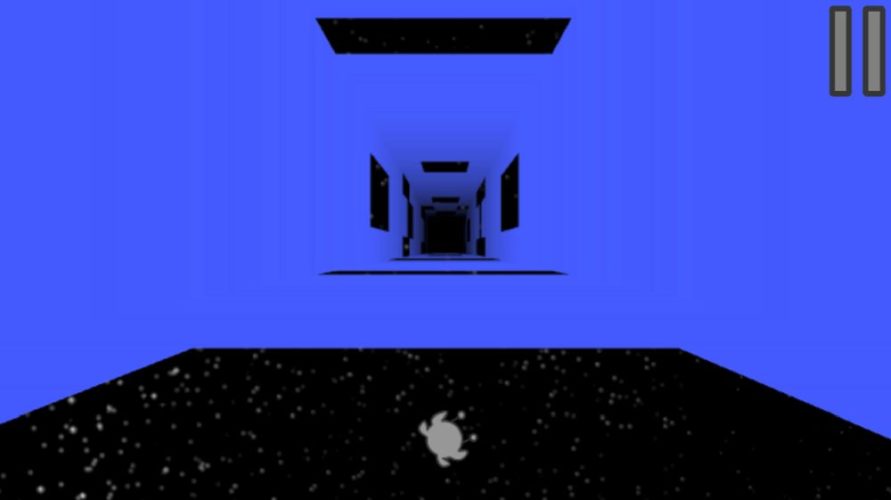
Here’s today’s question for you to ponder: what should a video game sequel be? Should the developers completely redesign the experience from the ground up and attempt to capture the same lightning in a bottle as the first game? Alternatively, should they simply iterate on and slightly improve the formula they created for their first outing, providing a similar experience for players who just want “more of the same”?
The correct answer is, well, a little from column A and a little from column B. The best sequels – Super Mario Sunshine, The Legend of Zelda: Ocarina of Time, Portal 2 – take the foundation created by their predecessors and improve on them, adding new features while retaining the core of what makes the series special. The worst ones – Devil May Cry 2, Bomberman Act Zero, Dark Souls 2 (yeah, we went there) – forget what made the original special and either live in their predecessor’s shadow or develop an unsatisfactory identity of their own.
All this talk of sequels brings us to Run 3, the latest in the long-running (ha) Run series created by developer Joseph Cloutier and available on Poki right now. The Run series is a reliable one; the original Run, while a little clunky by today’s standards, is a satisfying auto-runner, and the sequel improves on it in impressive ways, bringing a more visually and mechanically appealing sheen to the core gameplay. The third instalment, therefore, has a lot riding on it; it needs to maintain the momentum (ha) the series has been building while also creating an identity of its own as a game.
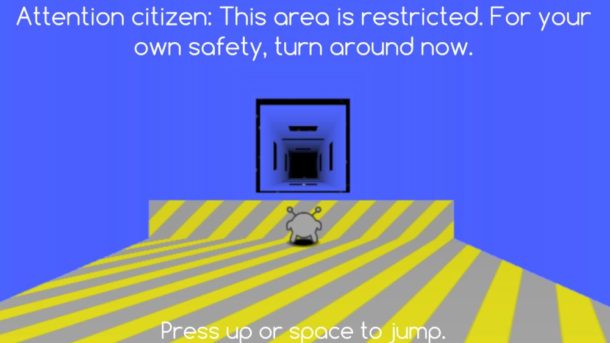
It’s our great pleasure to report, then, that Run 3 ticks all the boxes of a great sequel, successfully retaining the superlative look and feel of its franchise while also crafting its own legend into the bargain. Just like previous instalments, Run 3 sees players take control of a tiny grey alien out for a run, but this time there’s the slightest of narrative hints to get us going: right at the beginning of the game, our alien runs smack-dab into a police-style black and yellow barricade, along with a warning to “turn back, citizen”.
It sounds silly, but this tiny bit of narrative context is enough to transform the experience into something more substantial than its predecessors. We have some idea now of who we are and what we’re running from. It’s not much, and it doesn’t need to be much, but it’s enough. Of course, that wouldn’t mean anything if what followed wasn’t a patch on the other games in the Run franchise. Gameplay has always been the wheel that has steered the Run series to success, so let’s talk core mechanics.
Run 3 takes many of its predecessors’ core ideas at its centre. It’s still a third-person auto-running platformer, and the perspective is still firmly lodged behind the main character’s back. Gameplay’s still about avoiding drops and navigating space geometry, just like the previous titles, but a few key improvements have been made. Perhaps the most significant one is that rather than being split into different segments, Run 3 is now one giant seamless level.
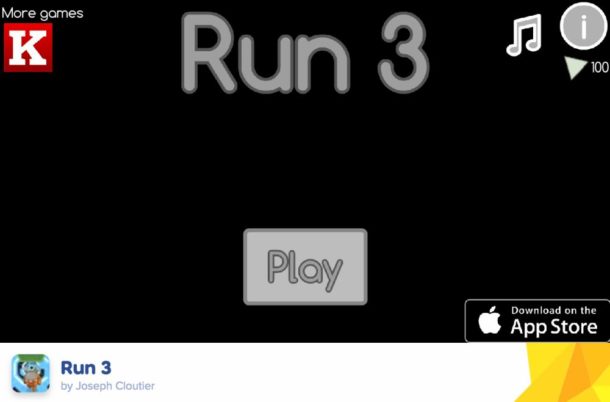
Okay, that’s not strictly true. The game’s still split up into stages (which can now be viewed on a rather adorable “galaxy map” from the main menu”), but while playing, level 6 will transition seamlessly into level 7, for example. This makes for a far more compelling play experience than Run or Run 2, since there’s no natural stopping point; these aren’t games designed for immersion, but they manage it anyway thanks to the lack of natural breaks.
Otherwise, Run 3 is still very much business as usual. A number of core mechanics are iterated on; platforms which break underfoot give the player extra chances to survive drops, and it’s now possible to unlock other runners and cosmetic features in order to augment the gameplay experience. At its core, though, Run 3 is still the excellent auto-running platformer its predecessors need it to be, and the new characters and cosmetic unlocks simply serve to enhance the solid bedrock at the game’s core.
All of Run 3’s new features are improvements, and we’re hard-pressed to find faults, if we’re honest. The game’s new tunnel-like structure is an improvement over the previous game’s floating platforms in space, because each level feels more coherent and “of a piece” than before. The music is better, with more of a sense of urgency to it to match the increased narrative tension. Finally, the visuals are superior, with enhanced animation lending our protagonist a cute relatability and making jumps and dodges feel all the more satisfying.
If this is your first Run game, you couldn’t have picked a better place to start. It’s still well worth visiting the older entries in the series, just to see where it all began, but Run 3 is the best game in the franchise yet.
Features
Exploring Valorant eSports Stats: Unveiling the Metrics Behind Competitive Excellence

In the rapidly expanding realm of Valorant eSports, statistical analysis plays a pivotal role in understanding player performance, team dynamics, and the strategic nuances that define success in competitive play. This article delves into the significance of Valorant eSports stats, their impact on the competitive landscape, and how they empower players, teams, and fans alike.
Key Metrics in Valorant eSports Stats
Valorant eSports stats encompass a wide array of metrics that provide insights into player proficiency and team strategies. These include individual performance indicators such as kill-death ratios (K/D), average damage per round (ADR), headshot percentages, and assist counts. Team statistics such as round win percentages, first blood percentages, and economy management efficiency further illuminate strategic strengths and areas for improvement.
Analyzing Player Performance and Contribution
For professional Valorant players, statistics serve as a critical tool for evaluating individual performance and contribution to team success. By analyzing metrics like K/D ratios and ADR, players can assess their impact in securing eliminations, dealing damage, and supporting team objectives. This data-driven approach enables players to identify strengths to leverage and weaknesses to address, enhancing their overall effectiveness in competitive matches.
Strategic Insights and Adaptation
Valorant eSports stats provide valuable strategic insights that shape team tactics and gameplay adaptations. Coaches and analysts analyze statistical trends to optimize agent selections, refine map strategies, and counter opponents’ playstyles effectively. The ability to leverage data-driven decision-making empowers teams to evolve their tactics, adapt to meta-game shifts, and maintain a competitive edge in the dynamic world of Valorant eSports.
Tracking Tournament Trends and Meta-Game Evolution
Beyond individual matches, Valorant eSports stats track broader tournament trends and meta-game evolution. Historical data on agent pick rates, map preferences, and round outcomes reveal emerging strategies and meta-shifts over time. This analytical depth allows teams and analysts to anticipate trends, innovate strategies, and stay ahead of competitors in high-stakes tournaments and league play.
Fan Engagement and Spectator Experience
Valorant eSports stats enrich the spectator experience during live broadcasts and tournament coverage. Fans can follow real-time updates on player performances, compare stats across matches, and engage in discussions about standout plays and strategic decisions. Interactive platforms and statistical dashboards enhance viewer engagement, fostering a deeper connection with the competitive narratives unfolding in Valorant eSports.
Impact on eSports Betting and Fantasy Leagues
Valorant eSports stats play a crucial role in eSports betting markets and fantasy leagues, where informed decision-making hinges on statistical insights. Bettors and fantasy league participants leverage player and team stats to assess form, predict match outcomes, and manage their investments strategically. Real-time updates and comprehensive data analysis enhance the strategic depth and excitement of eSports engagement for fans worldwide.
Technological Advancements and Data Visualization
Advancements in technology have revolutionized how Valorant eSports stats are accessed and analyzed. Streaming platforms and eSports websites offer sophisticated data visualization tools, interactive heatmaps, and player performance overlays that enhance the depth and accessibility of statistical analysis. These technological innovations provide analysts, commentators, and fans with enhanced insights into gameplay dynamics and strategic decision-making.
Future Innovations in Statistic Analysis
As Valorant continues to evolve as an eSports powerhouse, the future of statistical analysis promises further innovations. AI-driven predictive analytics, enhanced machine learning algorithms, and real-time performance tracking technologies are poised to revolutionize how eSports stats are processed and utilized. These advancements will elevate the precision, depth, and predictive capabilities of statistical analysis in Valorant eSports, shaping the future of competitive gaming.
Casual
Encouraging Growth and Motivation: Resources for Child Development

Child development is a complex journey marked by critical milestones where each stride forward builds upon the foundation of the previous one. Acknowledging children’s individual needs, pediatric therapy services tailor strategies to foster physical, emotional, and cognitive growth. To support this transformative process, environments that prompt curiosity and engagement, coupled with advanced educational tools, play an instrumental role in shaping young minds. These resources, carefully selected and applied, can significantly amplify a child’s developmental trajectory. Keep reading to learn about the effective ways these tools and techniques can aid in advancing childhood milestones.
Pediatric Therapy Services: Enhancing Developmental Milestones
Pediatric therapy services support children as they reach and surpass developmental milestones. These services, often provided by skilled therapists, address various growth challenges, ensuring each child has the best possible start in life. From speech and occupational therapy to physical and behavioral interventions, these professionals tailor their approach to meet the unique needs of every young patient.
Therapists work relentlessly to motivate children, fostering an environment where milestones are not merely achieved but celebrated. Through personalized, one-on-one sessions, children gain the confidence and skills necessary to navigate their developmental journeys more easily. The trust between therapist and child is a solid foundation for consistent progress and paves the path for lifelong learning and adaptation.
Resource provision is a key component of pediatric therapy, equipping parents with the tools to continue therapy practices at home. Effective communication between therapists and families ensures a cohesive strategy that envelops the child’s daily routine, enhancing the therapy’s impact. It also allows parents to identify subtle progress, reinforcing their pivotal role in the child’s developmental success.
If you’re looking for pediatric therapy in your area, a simple Google search like “pediatric therapy Arizona” will help you find local providers and services tailored to your child’s needs, ensuring they receive the specialized care necessary for their development.
Optimizing Play Spaces: Creating Environments for Learning and Exploration
Optimized play spaces are vital platforms where children engage with their world, build skills, and unleash their creativity. Designers of such areas pay astute attention to elements that promote safe exploration and intellectual stimulation. A thoughtfully arranged play environment serves as a place of entertainment and a crucible for burgeoning development.
Professionals incorporate a variety of tactile and visual stimuli within play areas to cater to diverse developmental needs and interests. Stimulating sensory experiences is central to cognitive and motor skill refinement among younger populations. The intentional selection of colors, textures, and interactive features sparks curiosity and encourages physical activity, which is fundamental to healthy growth.
Accessibility remains paramount in creating play spaces, ensuring they cater to children across all abilities. Including adaptive resources within these environments demonstrates a commitment to inclusive development, allowing every child to participate and benefit from the joy and learning play offers. Such inclusiveness fosters a sense of community and belonging, which is essential for emotional and social development.
Affording children autonomy in their play advances self-directed learning and problem-solving capabilities. When children feel empowered to make choices within their play, they better understand their preferences and abilities, setting the stage for confidence and self-awareness — qualities that are instrumental as children grow and transition through life’s stages.
Additionally, incorporating elements like fake plants or outdoor plants from retailers like Nearly Natural outdoor plants into play spaces can enhance children’s sensory and aesthetic experience.
Interactive Learning Tools: Technology and Resources for Cognitive Development
Interactive learning tools harness technology’s power to solidify children’s cognitive development. These digital resources provide an array of engaging, educational content that aligns with critical thinking and problem-solving skills.
Software and applications designed for children’s learning capitalize on the allure of multimedia to capture young minds. Effective education solutions provide children with stimulating challenges that are age-appropriate and aligned with developmental targets.
The discerning use of educational technology in classrooms and homes can reinforce concepts and skills taught through traditional methods. It creates a harmonious blend of instruction and interactive play, thereby cementing a child’s understanding and retention of information.
Providers of such educational platforms are ever vigilant, updating content to reflect new educational strategies and the latest academic research. Thus, children equipped with these technological tools remain at the vanguard of current learning methodologies, all while engrossed in fun and dynamic ways.
Overall, caregivers and educators can provide comprehensive support for children’s developmental journeys by integrating pediatric therapy services, optimized play spaces, and interactive learning tools. These resources nurture their physical, emotional, and cognitive growth and cultivate a lifelong love for learning and exploration.
Browser Games
TrustnPlay.com Review: The Best Companion in the World of Online Gaming
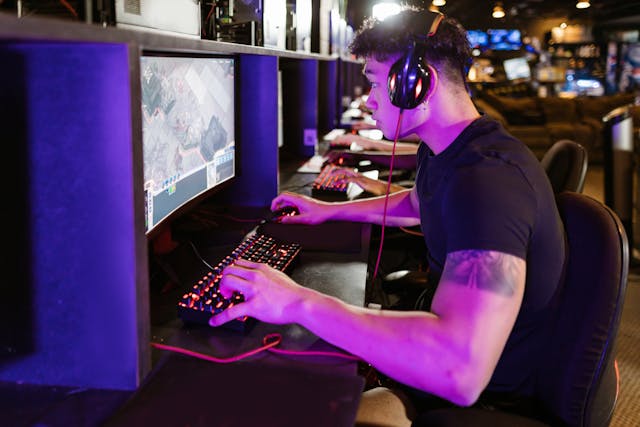
TrustnPlay.com is the destination for anyone who wants the best online casino experience. If you’re a newcomer or have played for a long time, TrustnPlay has got you covered. They are the go-to guide for anyone who needs access to credible and detailed information about the online gaming world.
This gaming guide is on a mission to empower users with the knowledge to make informed choices. They intend to achieve this by providing unbiased and comprehensive reviews of online casinos. They mostly explore their distinct features, strengths, and weaknesses.
Their analyses are different from what you’ll find online. All their analyses are conducted by industry experts who regularly provide professional insights for users worldwide.
TrustnPlay.com is home to reviews and guides on several exciting games, bonuses, and promotions. By digesting the information they provide, users can make informed decisions about their activities in the online casino world.
Anyone who uses this platform will always stay ahead of the curve! They keep updating their platform with expert strategies, tips and offers for users to win big. Also, they operate an open-door policy, as the community is open to everyone to improve their online gaming experience.
Features of TrustnPlay.com
TrustnPlay.com is a trusted platform where users can access credible best online casino reviews USA and the online gambling space.
Here are some of the features they offer:
Comprehensive Guides to Casino Games
Over time, TrustnPlay platform has been enriched with in-depth guides that help you familiarize yourself with your favorite casino games. Irrespective of your interests, you’ll find their guides helpful as they reveal hidden insights, strategies, and tips to improve your gaming skills, boosting your chances of winning.
User-Friendly Interface
TrustnPlay boasts an intuitive and clean interface that is easy to navigate. If you’re using this gambling guide for the first time, you will find it easy to access the tools on the platform. They have an organized layout and an efficient search function. The platform is optimized to function on all devices—mobile phones, tablets, and laptops. You can enjoy the same seamless experience on your preferred device at any location.
Easy Registration Process
It is fast and easy for anyone to create an account with TrustnPlay.com. With their simplified registration process, users can sign up and access lots of content on the platform. Users can participate in the community and get recommendations from other users on the platform.
Latest Industry Updates
With this platform, users can stay informed with their updated news on the casino industry. The platform’s editorial team works round the clock to inform registered users on emerging technologies and trends, regulatory changes, and gambling resources.
Editorial View and Community Engagement
TrustnPlay.com is passionate about making a good name for themselves, and it begins with cross checking the type of content they publish. They’re committed to providing unbiased, accurate and informative content to guide users’ decisions. TrustnPlay offers readers transparent and credible insights into different aspects of the casino industry. For each casino review, there are some criteria that help conduct a fair and equal assessment that improves the audience’s overall experience.
They boast an interactive and vibrant community where every new player can feel welcome. Each conversation is always meaningful and insightful. Here, you’ll find players sharing their experiences and seeking advice from other enthusiasts. TrustnPlay ensures that all interactions are closely monitored to fish out fraudulent individuals. So, if you have any questions about a particular casino or game or you need recommendations, the community has got you covered.
Through the community feature, users are allowed to connect with each other in real-time. They can even get access to the support team within a short time and get answers to their questions. Ultimately, the community feature ensures that users are never alone in their online gaming journey.
Tools and Resources for Players
TrustnPlay.com offers a wide range of tools and resources that improve players’ gaming experience and empower them to make better decisions. They provide users with betting guides that cover a wide range of topics, catering to the needs of beginners and professionals alike. These guides contain techniques and instructions for players to improve their mastery of casino games.
There are resources for games like roulette, slots, blackjack, etc. These resources help players stay ahead with news updates. You’ll find the latest developments and news in the online casino industry. With the news updates, players can stay informed and make decisions on the online casino to use and how to play. TrustnPlay.com is never short of expert insights on the best mobile online casinos. You can access professional insights and analysis that offer smart and distinct perspectives to increase your chances of success.
Their resources are designed to empower players with knowledge to understand how the online casino world works. When users have access to the latest trends and news, they can leverage opportunities and learn how to avoid possible pitfalls. This empowerment leads to a satisfying gaming experience because players will feel in charge and confident in achieving their gaming goals.
Standing Out in a Crowded Arena: What Makes TrustnPlay.com Unique
TrustnPlay.com comes with unique offerings that other online casino guides don’t have. Here are some of them
Highlighting Responsible Gambling
TrustnPlay is committed to promoting responsible gambling and ensuring it is done responsibly. They offer players several resources that guide them toward responsible gambling. By providing limit-setting features and assessment tools, players can gamble responsibly without attracting any disciplinary measures or developing a gambling addiction.
User-Centric Approach
The needs of every player are at the core of every service they provide. They are designed to cater to the needs of every user, ensuring they have a seamless experience. So, regardless of what you’re searching for like game guides, industry news, and the best online casino reviews USA, you’ll find everything on this platform. They take feedback very seriously. They listen to what users are saying, and use their feedback to implement more features and meet the needs of everyone.
Updated and Accurate Information
Information is very critical in the online casino world. But, updated information is more essential. TrustnPlay works tirelessly to provide users with updated and accurate information that highlights the latest trends and developments in the casino space. Their dedication to providing accurate and updated information helps players make well-informed decisions.
Exclusive Bonuses, Promotions and Payment Methods
TrustnPlay.com regularly provides players with updates on special bonuses and promotions that most people may not hear about. These exclusive promotions often include free spins, VIP and loyalty rewards, and welcome bonuses. They also inform players on the best online casino payment methods that works for their location.
Your Trusted Guide in the World of Online Gaming
TrustnPlay’s loyalty is to users interested in making something for themselves in the online casino world. They’re committed to providing a user-friendly and robust platform with accurate casino reviews, updated industry news and detailed game guides. Their dedication to excellence and exceptional online gambling offerings sets them apart from other platforms. This platform is positioned to support players and improve their online gaming journey.
-

 Guides5 years ago
Guides5 years ago6 Proven Ways to Get more Instagram Likes on your Business Account
-

 Mainstream10 years ago
Mainstream10 years agoBioWare: Mass Effect 4 to Benefit From Dropping Last-Gen, Will Not Share Template With Dragon Age: Inquisition
-

 Mainstream6 years ago
Mainstream6 years agoHow to Buy Property & Safe Houses in GTA 5 (Grand Theft Auto 5)
-

 Casual2 years ago
Casual2 years ago8 Ways to Fix Over-Extrusion and Under-Extrusion in 3D Printing
-

 Mainstream12 years ago
Mainstream12 years agoGuild Wars 2: The eSports Dream and the sPvP Tragedy
-

 Guides10 months ago
Guides10 months agoFree Fire vs PUBG: Comparing Graphics, Gameplay, and More
-

 iOS Games2 years ago
iOS Games2 years agoThe Best Basketball Games for IOS
-

 Gaming News1 year ago
Gaming News1 year agoSwiping, Tapping, and Tilting: How Mobile Games Are Played Today

